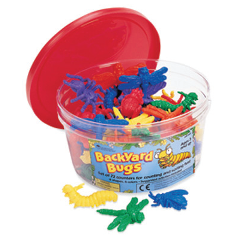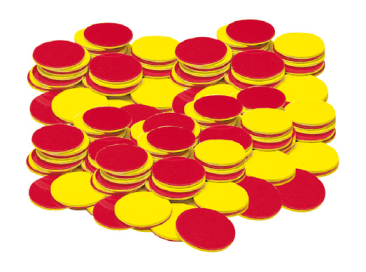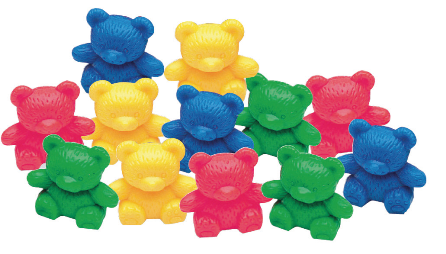Diagnostic questions
Place six beans in one of the student’s hands and three beans in the other. Say to the student, “You have six beans in this hand and three beans in this hand. How many beans do you have altogether?”
What to notice in the student’s response
Does the student open their hands and count six beans in one hand and three beans in other and say “6 and 3” without joining the two sets?
Does the student keep their hands closed and say “6 and 3”?
Deliberate acts of teaching
Materials/Links
- Paper or plastic cups with elephants on the outside
- Set circles made from container lids or sorting circles
- Cubes and counters
- Plastic animals, such as bears or cows; toy transport vehicles
- Feed the Elephant (Material master 5-7) (PDF, 119KB)
- Teddy Bears’ Picnic (Mathematics Standards illustration)
When supporting a student to grasp the concepts of joining and separating sets, it is important to focus on the action and language of the process. Begin with sets of five, then increase to sets of ten. Emphasise the language of “How many are there altogether?” and “How many are there left?”
Set circles for joining sets
Place two set circles on the floor/table beside each other and use a larger set circle to enclose both sets. Create stories involving discrete objects, for example, “Farmer John has two paddocks of cows. One paddock has four cows, and the other has five cows. How many cows does Farmer John have altogether?” Place one set in one circle and a second set in the other. Remove the two inner set circles to show objects as one large set. Encourage the student to physically push the two sets together and to count all the objects.
Feed the Elephant (adapted from Book 5: Teaching Addition, Subtraction, and Place Value)
Create stories in which an elephant eats specific foods. Ask the student to use coloured blocks to represent items of food and to place them in, or remove them from, a plastic cup. Tip out the contents of the cup and ask the student to count the blocks to see how much the elephant has eaten altogether or how much food the elephant has left.
For example, “Elephant ate three bananas and two apples. How many fruits did he eat altogether?” or “Elephant got six oranges from the shop and ate two on the way home. How many oranges does he have left?”
Teddy Bears’ Picnic can also be used (Mathematics Standards illustration).
What to do next if the student is stuck
Check that the student has a stable order count. Ask the student to count objects from a box, for example, six teddy bears, eight beans and four pegs. After each count, ask the student “How many?” Repeat using different numbers. Ensure that the student identifies the number they have counted as “how many” objects there are.
Initiating home-based activities
Encourage parents to help the student use the counting-all strategy to solve word problems within everyday contexts. For example, “How many red marbles do you have? How many green marbles do you have? So how many marbles do you have altogether?” Parents could cut up a piece of fruit to create problems such as “Here are eight pieces of apple. If you eat three pieces, how many pieces will you have left?”
Next teaching steps back in the classroom
Introduce “change unknown” number sentences/problems, for example, 4 + = 7, 5 –
= 3.
Increase the size of the number involved in story problems, encouraging the student to work with numbers greater than 10.


